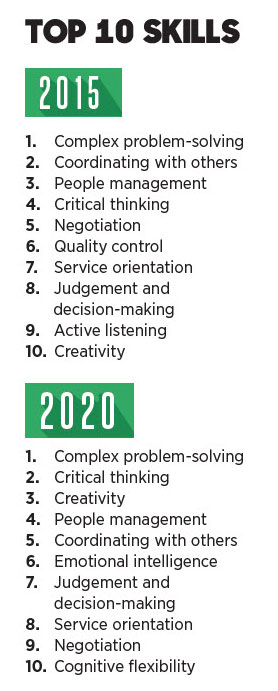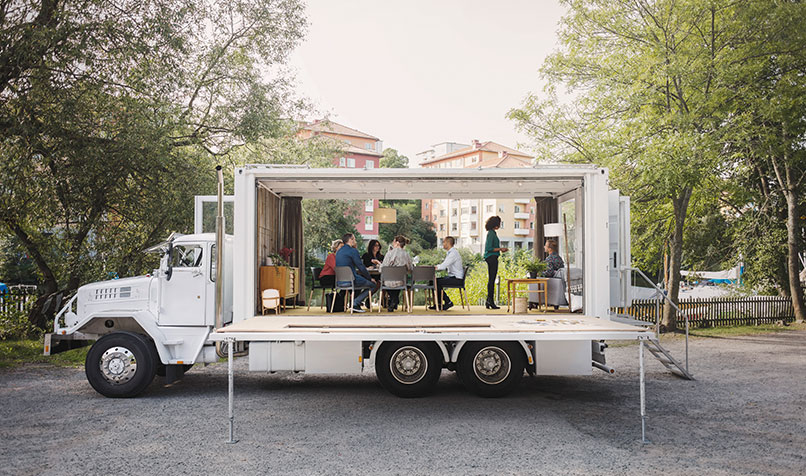Loading component...
At a glance
By Johanna Leggatt
There is a common misconception that creativity is the sole preserve of artists and writers, those who dedicate their lives to authoring stories or music.
However, that could not be further from the truth.
In a 2019 talent report, LinkedIn identified creativity as the most in-demand soft skill (regardless of industry) in a study that gleaned behavioural insights from the billions of data points entered by more than 590 million members in more than 200 countries on the business networking site.
Interestingly, 92 per cent of the thousands of job recruiters interviewed agreed that soft skills matter “just as much or more” than hard skills.
Surprising? Not to LinkedIn Australia and New Zealand managing director, Matt Tindale.
“What we see time and time again is that those so-called soft skills are by far the most in demand,” he says.
Soft skills are practical competencies such as collaboration, adaptability, time management, persuasion and communication.
“In this instance, creativity tops that list,” says Tindale.
Productivity expert Donna McGeorge, author of The First 2 Hours: Make Better Use of Your Most Valuable Time, finds it interesting that people still refer to communication and creativity as “soft skills” and value them less than technical abilities.
“I think it’s the hardest work we do,” she says. “People who have such a strong technical bent, the lawyers, accountants and engineers I work with, value hard skills so much higher because they are easier to quantify.”
McGeorge says that professionals will, as they progress in their career, be called upon to demonstrate leadership and that is when the soft skills really matter.
Valuing creativity as a soft skill
Tindale says it is important for all professionals to broaden their definition of creativity.
“When asked to define creativity, we think of acting, singing, painting and so on,” he says.
Creativity in a business sense is about finding novel ways to solve problems.
“It comes back to that great old edict of ‘don’t come to me with a problem, come to me with a solution’.”
Tindale points out that second on the list of in-demand skills from the LinkedIn report is persuasion, which is closely linked to creativity.
“Persuasion is being able to communicate and articulate a concept and have someone come around to your point of view,” he says.
“Communication, creativity and persuasion all go hand in hand.”
McGeorge agrees on the need to reframe how we think about creativity, and that it involves much more than coming up with something new and unique.
“It’s about making connections between ideas,” she says.
“Accountants need to stop saying they’re not creative – you are creative already in the way you make connections between ideas for your clients.”
How to create creativity
Creativity and innovation are so highly valued at LinkedIn that staff are allowed time each month to explore “new and novel ways of doing things” either at work or at home.
“We give the global workforce a day to themselves to make themselves, the company or the world a better place,” says Tindale.

The company hosts workshops and activities, or staff may catch up on reading or take a walk.
“We try not to schedule any meetings and we are really clear about people taking the time for themselves,” he says.
Tindale says because most professional work revolves around process-driven, logical tasks, creativity in business may occur away from work.
Often we have the best ideas when brushing our teeth or travelling to work, he says.
“Getting away from your desk and walking through a park can help you think about things in a creative way. It’s a bit of a paradox, but there is a process to free, creative thinking.”
McGeorge, who runs workshops on creativity for logical thinkers aimed at accountants and other professionals, says workers should use the first two hours of their day to harness their productivity and, in turn, their creativity.
It’s when people’s brains are working at their peak, she says. It is important to define a problem that you need to solve in order to tap into your creativity.
“Write down the problem first and then use those daydream periods in your day to come up with an answer,” McGeorge says.
“Also try and foster curiosity by changing the way you talk and think. Instead of saying, ‘I think’, start by saying ‘I wonder if…’ and then your brain will find an answer.”
An encouraging work environment is vital to an open, questioning approach to fostering creativity.
“There needs to be tolerance for error so people feel brave enough to try new things,” she says.
Update your profile with soft skills
Although soft skills top the list of employer requirements, Tindale says they are never listed on people’s LinkedIn accounts. Job seekers will list artificial intelligence before communication skills, but communication skills are far more in demand. Importantly, far from being the trait of an inspired few, creativity is a skill that can be harnessed and tapped into.
“It’s not something that you’re born with; it’s something you can definitely develop, and it’s a state of mind,” says Tindale.
McGeorge says: “It’s a process of thinking, not an inherent trait.”
Creativity and future accountants
With the rise of AI and automation, it is more important than ever to tap into creativity. As Tindale says, computers can crunch numbers. Accountants need to come up with “original solutions to help their clients”.
“It’s about the interpretation of the data based on experience and knowledge, rather than just what can be done by software,” he says.
Make meetings meaningful

As any professional who has ever sat through a strained brainstorming session will attest, meetings are often not the best places for new ideas.
How do you ensure staff meetings foster creative thinking and engagement?
Donna McGeorge says it comes down to process. While you can’t just produce great ideas by telling staff to get creative, you can use a few activities to help their frame of mind.
“You could use the ‘I wish’ model, in which staff think about their work over the past week and, starting with the words ‘I wish’, focus on a problem and a solution,” she says.
Or you could use the fantasy dinner party model, in which you imagine how a celebrity or a person of a certain profession would handle a company problem.
The answers may be more hilarious than helpful, but they often open the floodgates to talking about genuine solutions to workplace or business issues.
The timing of the meeting is important, too – first thing is better than 4pm – as is the location.
“Take the team for a walk, stop in a park and have a conversation,” says McGeorge.
“There is nothing more discouraging for creative thinking than sitting in a boxy room in a building around a square table with no windows.”
It may help to give staff the problem the night before a brainstorm session. Once they have slept on it, there’s a higher chance of a creative solution.
Most importantly, ensure the meeting is a generous, solicitous space that allows all ideas – good or bad – to be aired.
Later you can run them through the reality lens, where you look at what the idea would take and cost to execute.
“You need to give people permission to not worry about whether the idea is great, as often it’s a so-called ‘bad’ idea that sparks the doable solution,” says McGeorge.
How to be more creative at work
- Grab a pen and paper to jot down ideas, or practise stream-of-consciousness writing.
- Take a creative learning course to learn how to think more creatively.
- If you are stuck on an idea, go for a walk and change your external environment.
- Mull over an idea for a few days.
- Collaborate with colleagues to bounce ideas off each other.
- Write down problems you’re trying to solve and let yourself find solutions naturally via meditation, taking a walk, exercising or sleeping.

